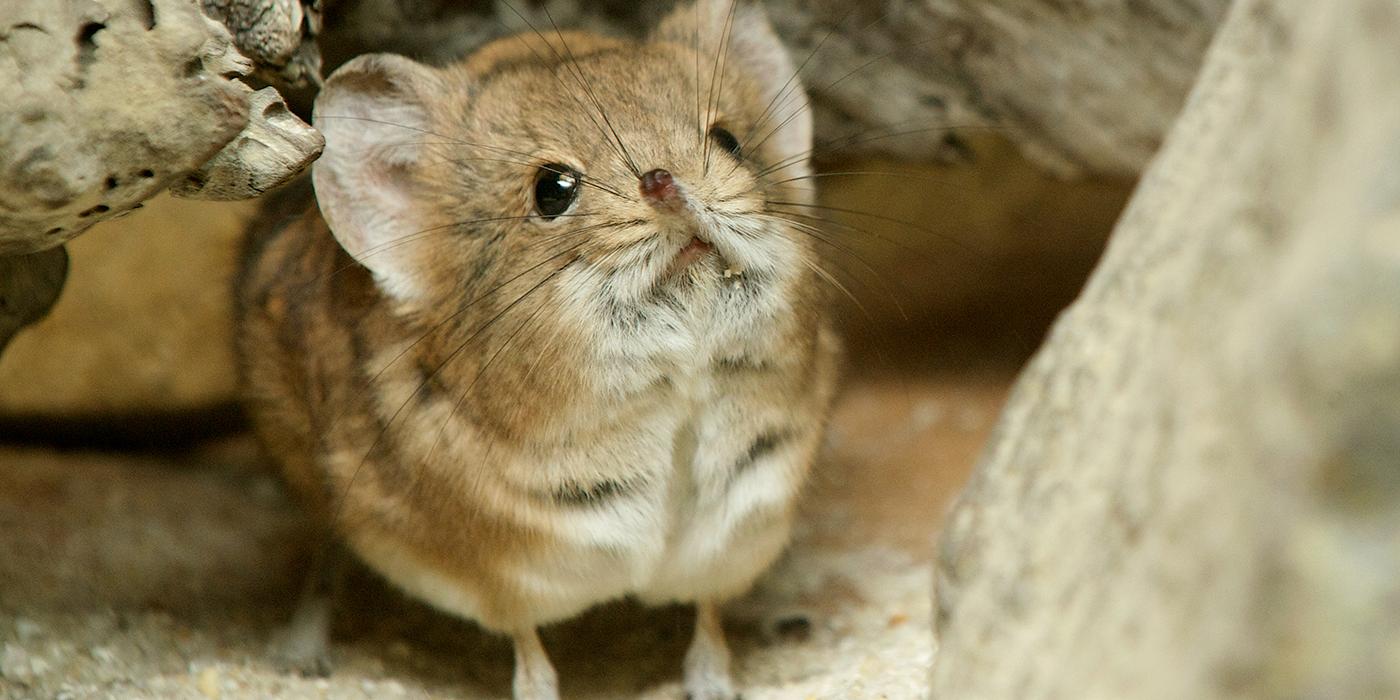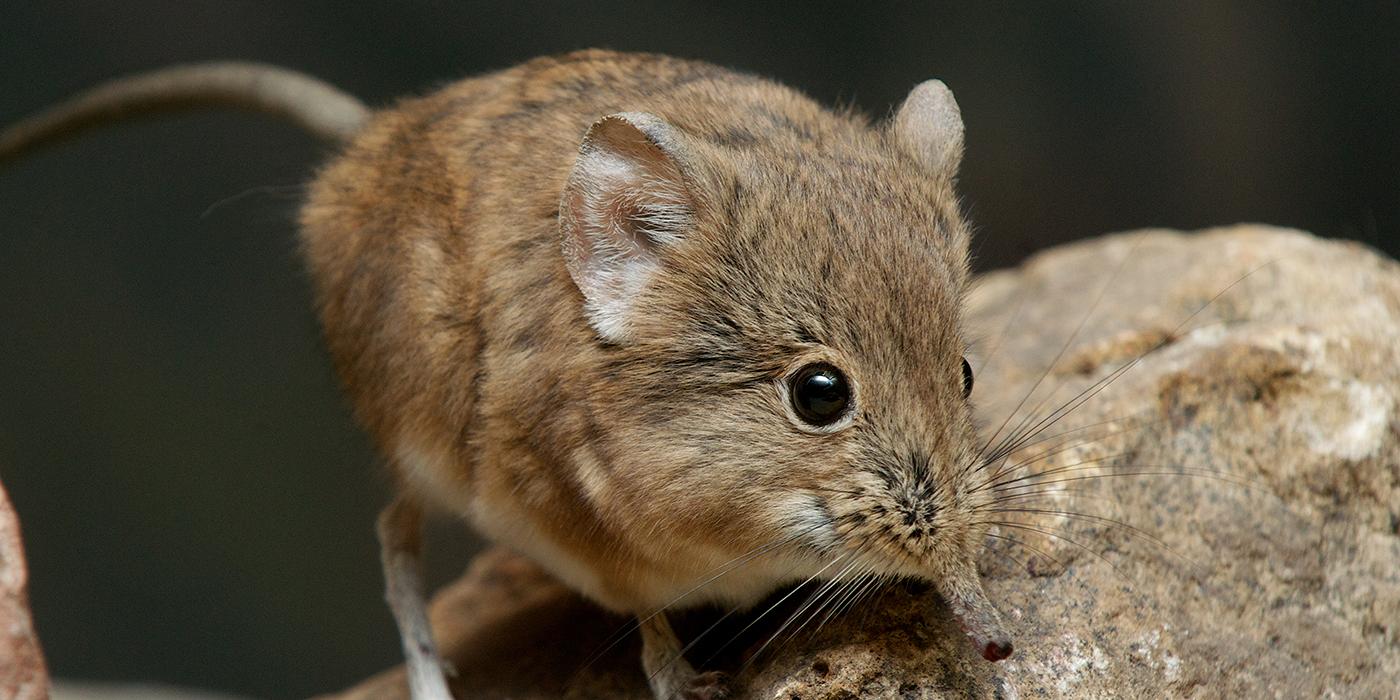Physical Description
The elephant shrew has mostly gray-brown fur with a white underside. It has a long, flexible snout with nostrils at the end. Elephant shrews move with their tails held horizontal to the ground. Their long, back legs are strong and adapted for leaping and swift running to escape predators, which include snakes and raptors.
Size
Short-eared elephant shrews weigh between 1 and 1.5 ounces (28 and 43 grams), and have a body length of about 4 inches (10 centimeters). They are the smallest of the elephant shrews.
Native Habitat
Short-eared elephant shrews live in southern Africa in Namibia, Botswana and South Africa. They prefer a habitat where they can burrow into sandy soil, including arid semi-desert, dry grass and shrub land. They can occupy a home range of up to 240 acres (97.12 hectares). They will keep trails clear of debris for a fast escape from predators.
Lifespan
Short-eared elephant shrews are believed to live between 1 and 2 years in the wild. They can live 3-4 years in human care.
Communication
Elephant shrews have large eyes and ears and a keen sense of vision and hearing. Their long tails are lined with knobbed bristles, which may be used like swabs to spread their scent.
Food/Eating Habits
Short-eared elephant shrews eat a diet of ants, termites, berries and tender shoots of young plants.
Sleep Habits
This species is diurnal.
Social Structure
This species is primarily solitary.
Reproduction and Development
After a gestation of 56 days, short-eared elephant shrews give birth to a litter of one or two during the wet season (August and September). Babies are born fully furred with their eyes open, like tiny miniatures of their parents.
Mothers return from foraging several times a day to nurse young. Young shrews start their own hunting at 2 weeks old. At 5-6 weeks old, they are sexually mature and seek out their own home range.
Conservation Efforts
Habitat modifications due to agriculture, desertification and other human-related factors have been observed within the range of short-eared elephant shrews but do not pose a serious threat at this time.
Help this Species
- Share the story of this animal with others. Simply raising awareness about this species can contribute to its overall protection.
- Are you a student? Did you love what you learned about this animal? Make it the topic of your next school project, or start a conservation club at your school. You'll learn even more and share the importance of saving species with classmates and teachers, too.
- Less is more. Cut down on the demand for resources by consuming less. Buy only what you need, and look for pre-owned or repurposed items before purchasing something brand new.





